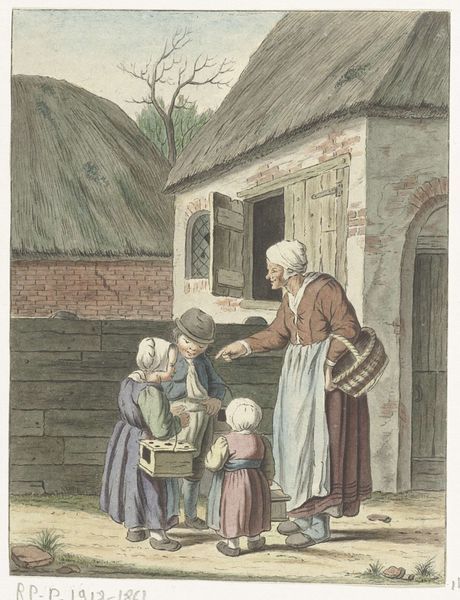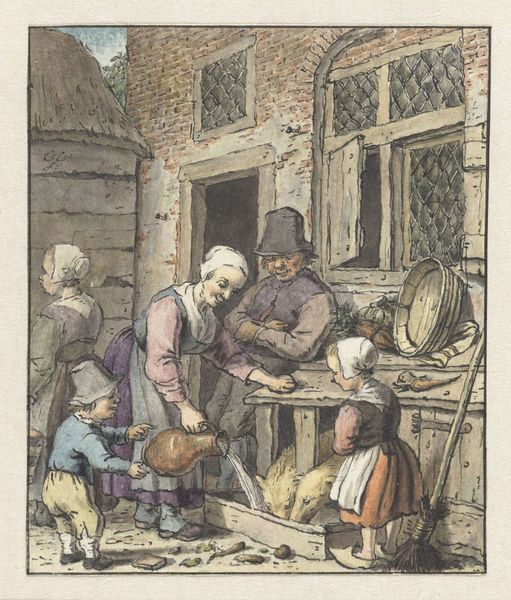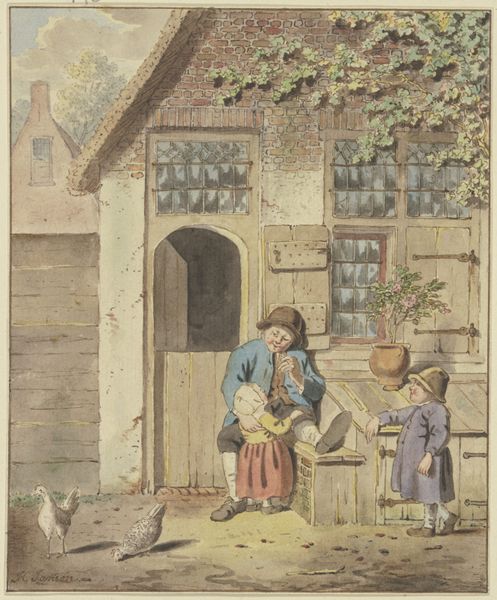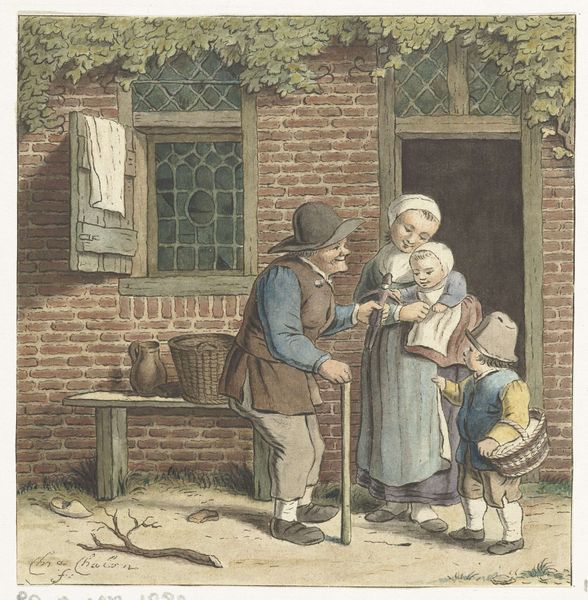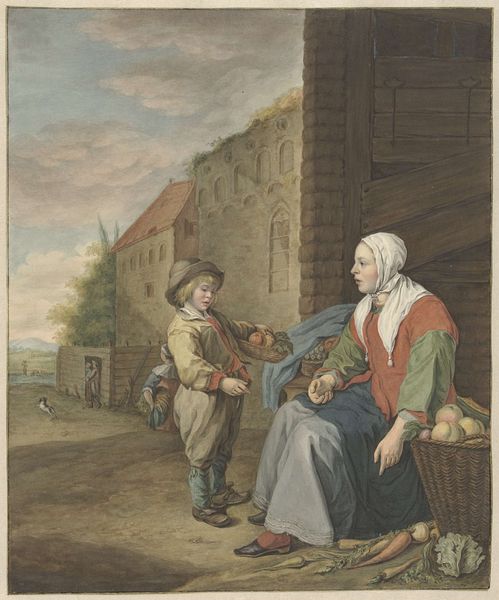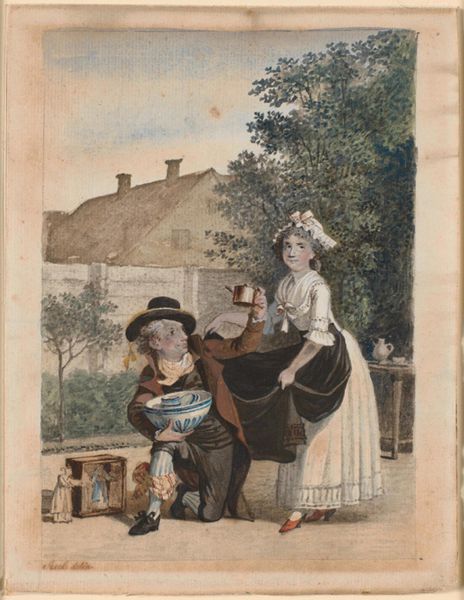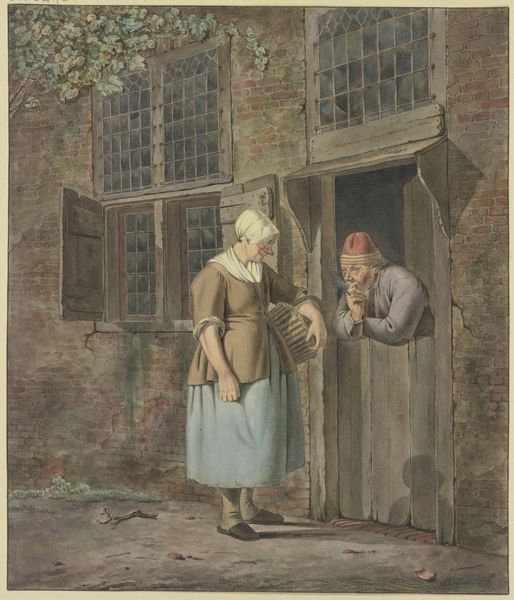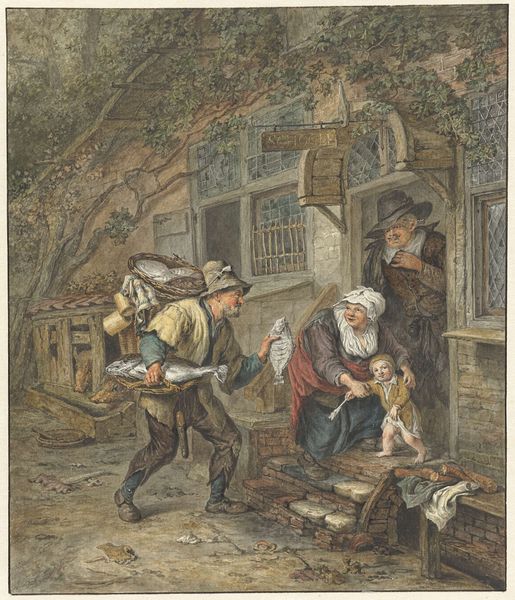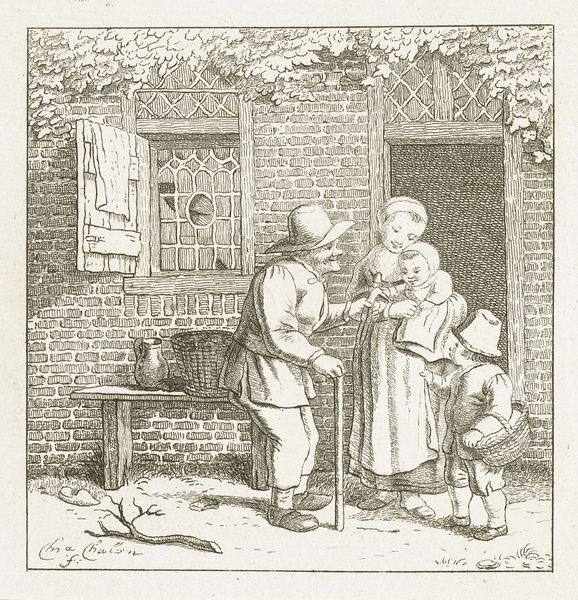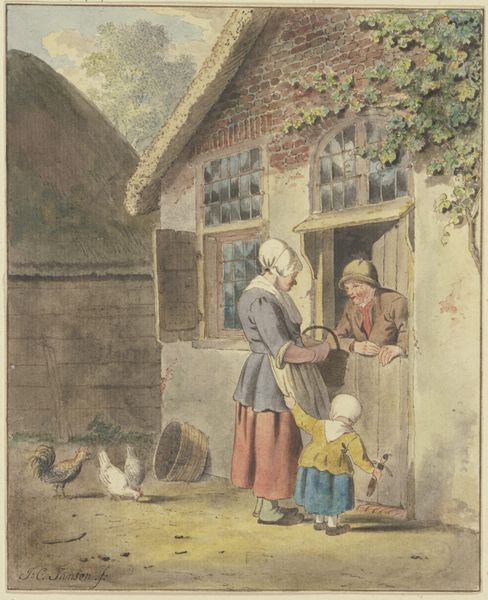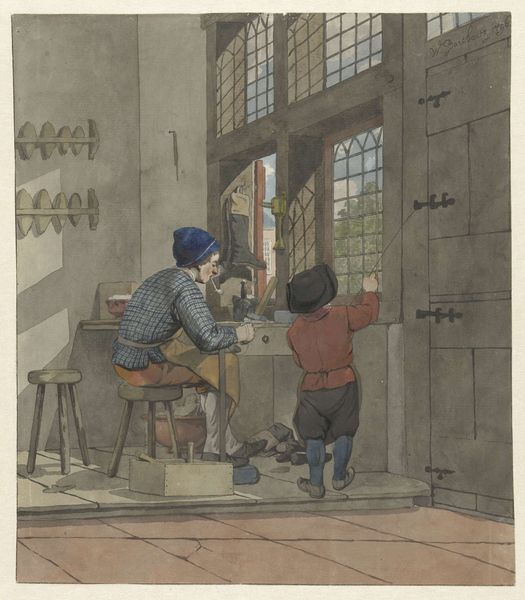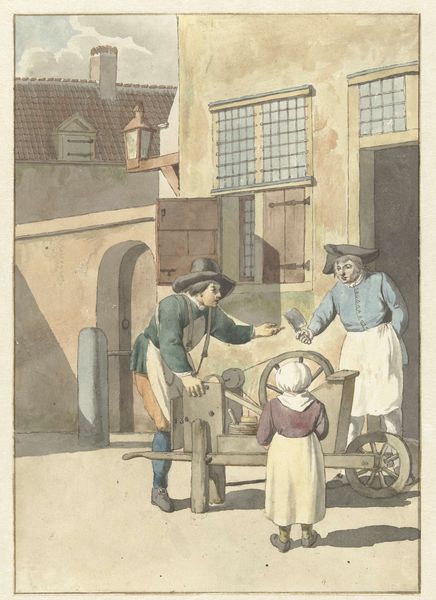
Dimensions: height 128 mm, width 93 mm
Copyright: Rijks Museum: Open Domain
Curator: Standing before us is "Boerenpraatje," a delightful piece rendered between 1758 and 1808 by Christina Chalon. Predominantly crafted with coloured pencil and watercolor, it's currently held here at the Rijksmuseum. Editor: It possesses a remarkably charming intimacy. The composition feels carefully structured, with the figures arranged in a way that directs the gaze directly at the interplay of gazes and gestures, all held together by the rather muted palette. Curator: Indeed, Chalon showcases the day-to-day labor and social fabric of rural life in this artwork. Her careful detailing—observe the rustic architecture or the hand-woven basket—offers invaluable insight into the material conditions shaping lives within this era's rural communities. Editor: I see what you mean. Yet, look at how the light falls! Observe how Chalon renders depth and volume by contrasting light and shade and using tonal modeling with soft textures. It draws one's eye towards the sentimental moment, and you almost forget this is just a small slice of everyday life. Curator: That so-called "slice of life," however, can actually be read as reflecting evolving class dynamics. Note how genre-painting began gaining popularity among a rising bourgeois class, thus indicating evolving interests around art production and its relationship with consumerist attitudes. Editor: That's a valid point, but the emotional nuance is just as vital. Take the father figure's smiling exchange with the child. It evokes sentiment that supersedes class. It speaks to something deeply felt regardless of circumstance. Curator: Perhaps, yet Chalon herself was active in circles reflecting very particular social stratification. These details surrounding process reveal critical factors informing meaning within the work. Editor: Be that as it may, "Boerenpraatje" has undeniably charmed through Chalon's keen ability at manipulating visual elements to great emotional and narrative impact, resulting in visual harmony which extends across time and classes. Curator: Well put. The layers of analysis offer a more intricate appreciation of what Chalon attempted through skillful craftsmanship, a testament towards better awareness concerning social influences around both her artistic process as well as society throughout which lived her working days.
Comments
No comments
Be the first to comment and join the conversation on the ultimate creative platform.
